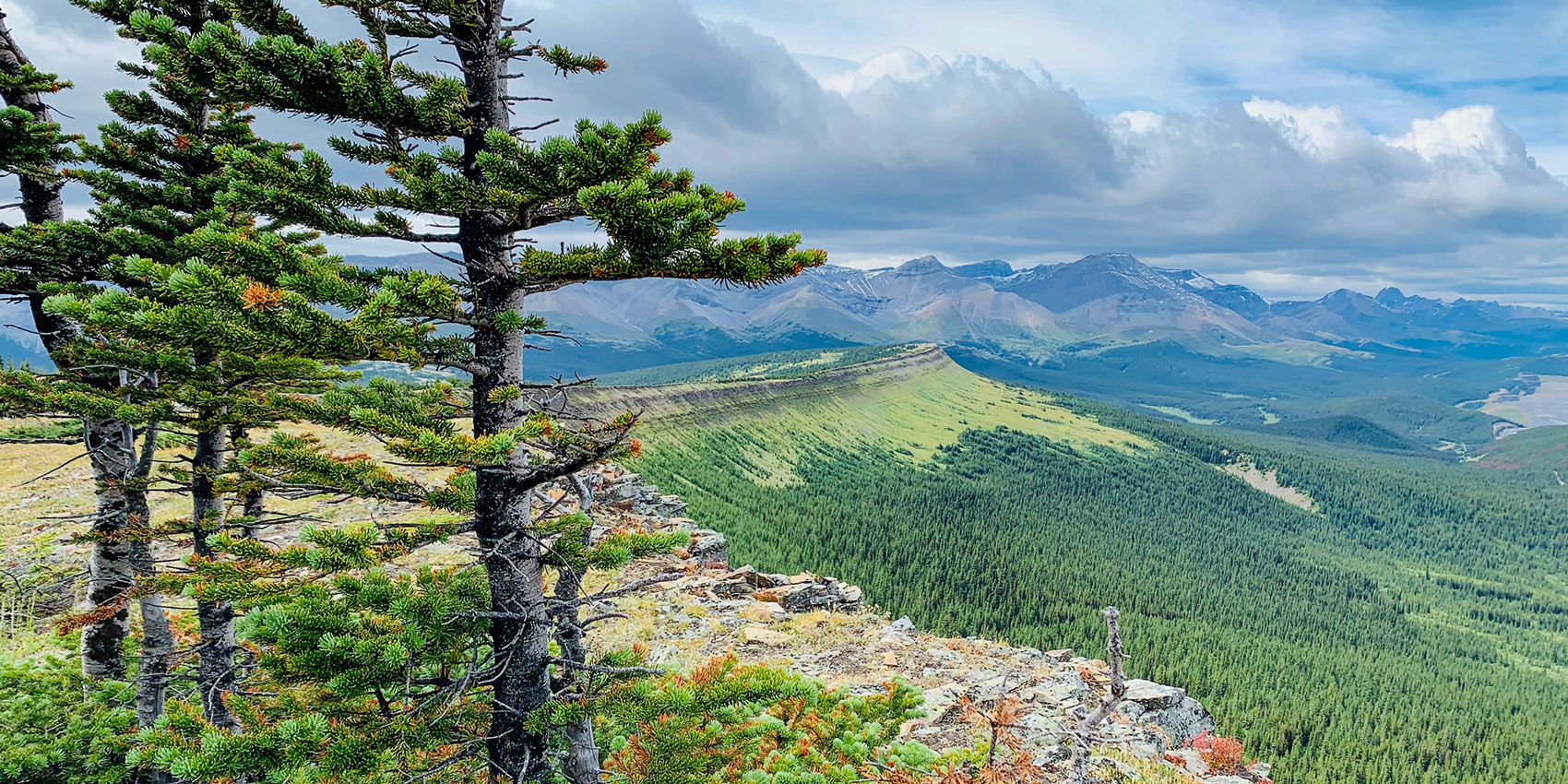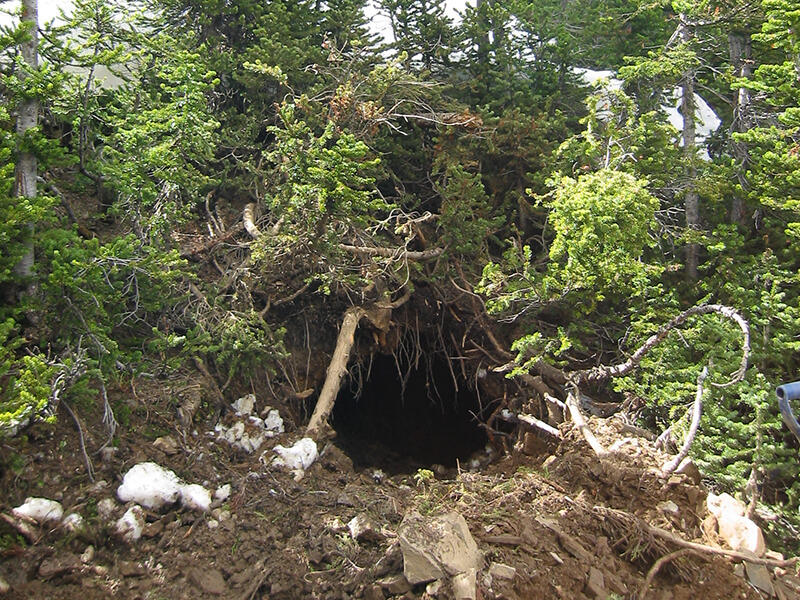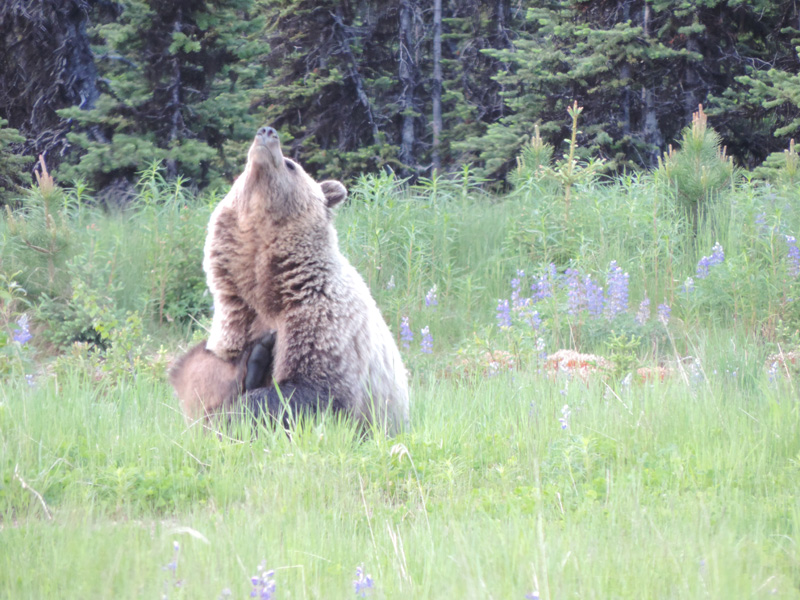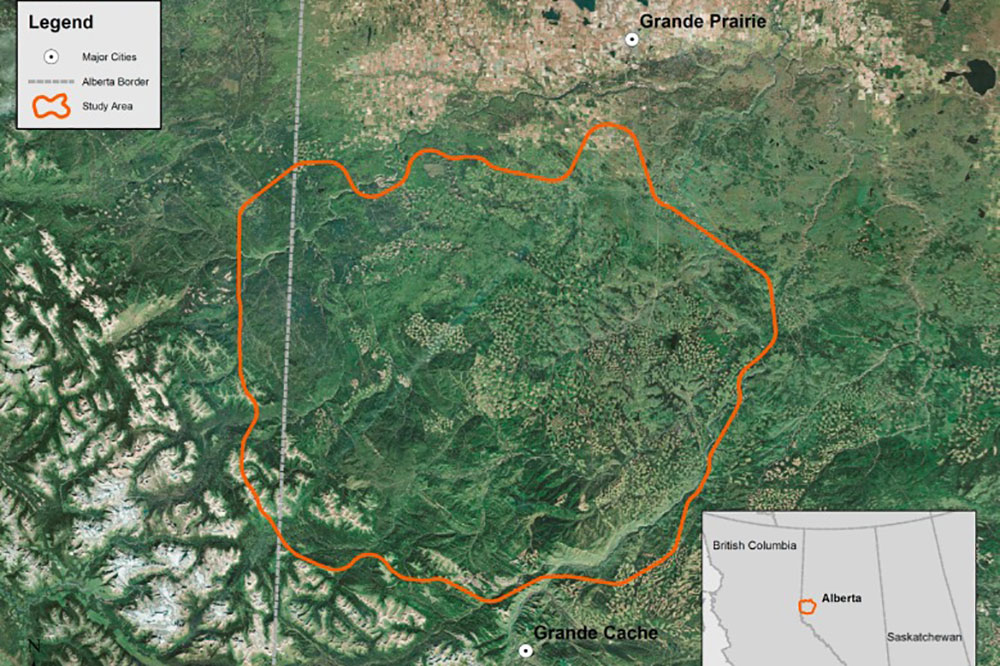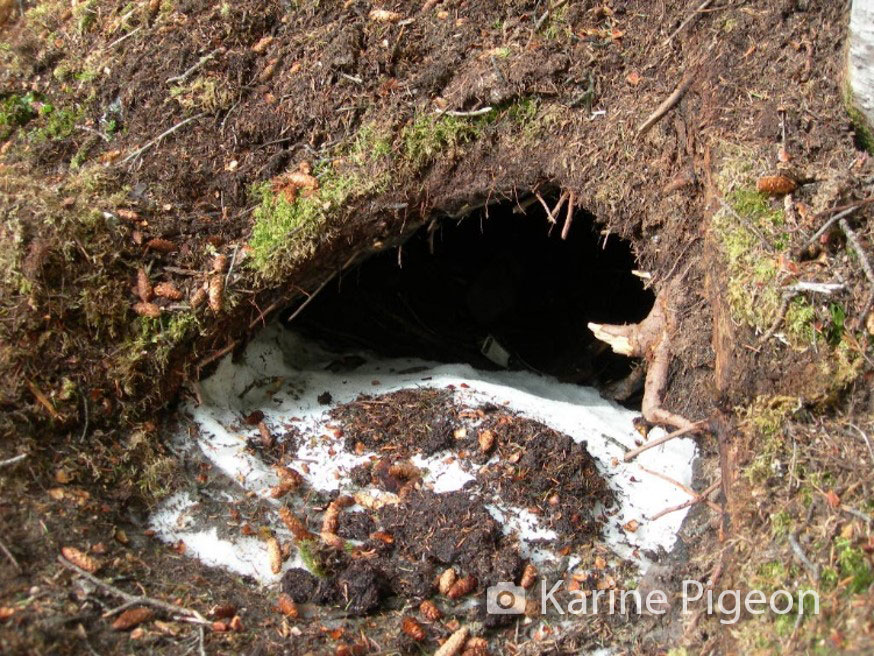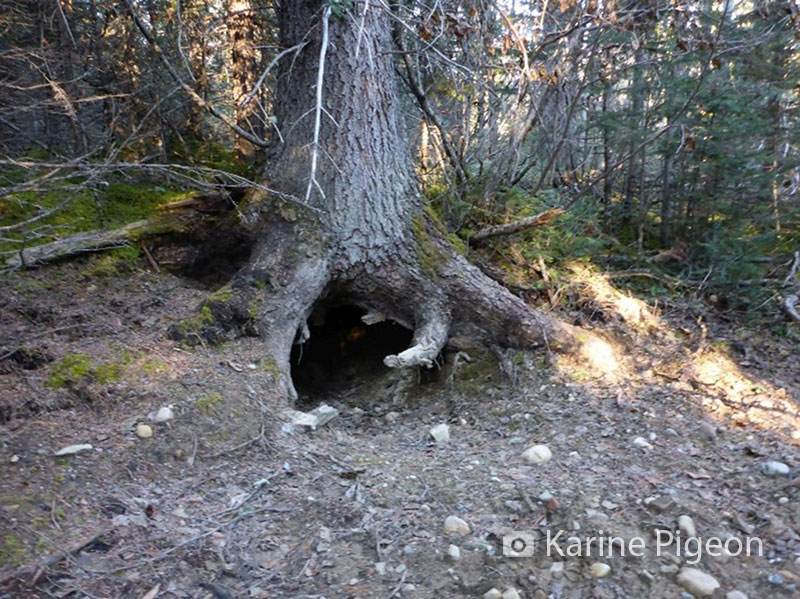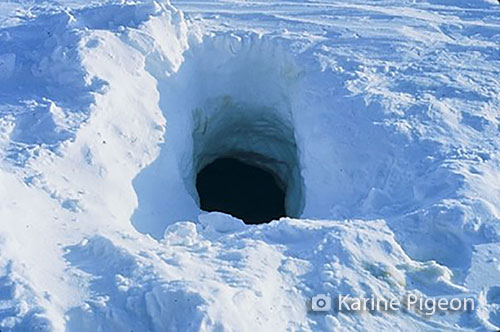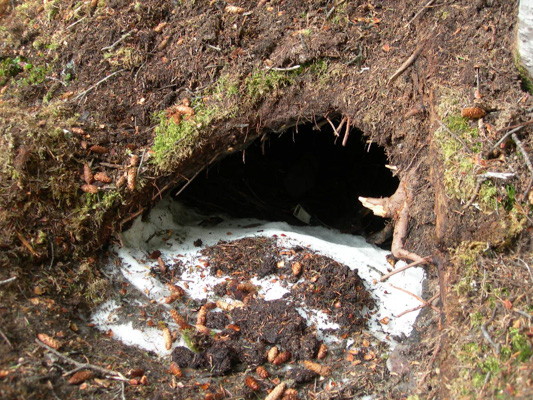
Abstract:
Hibernation is an adaptive strategy to avoid harsh environmental conditions and seasonal limitations in food and water. Unlike most hibernators, grizzly bears (Ursus arctos) are aroused easily while in dens and disturbances while denning can result in fitness costs if bears become active during this period. Our objectives were to determine den selection of male and female grizzly bears at multiple spatial scales in the boreal forest and Rocky Mountains of Alberta, Canada. Grizzly bears in Alberta are designated as threatened. However, little is known about den selection by grizzly bears in the boreal forest and the current land and forest management plans do not include any mitigation measures to minimize possible impacts on the denning habitat of grizzly bears. We compared dens to random available locations within fall home ranges using geographic information system–derived anthropogenic, land cover, landscape, and food resource variables. Male and female grizzly bears had similar habitat requirements when selecting dens, and females did not avoid sites associated with a greater probability of encountering males. At the broadest scale investigated, grizzly bears avoided wetlands, and selected high-elevation, dry conifer stands with abundant high-quality spring food. At more localized scales, grizzly bears selected areas of low road densities and dense conifers associated with little high-quality autumn food. Slope angle had the most influence on den selection followed by percent autumn food, road densities, percent wetland, and percent spring food. We recommend limiting human disturbance, including open roads, within core grizzly bear conservation areas for areas with high suitable den habitat.
Citation:
Karine Pigeon, Scott Nielsen, Gord Stenhouse & Steeve Cote. (2014) Den selection by grizzly bears on a managed landscape. Journal of Mammalogy, 95(3), pp.559-571.
Information on how to access the full article can be found here.



